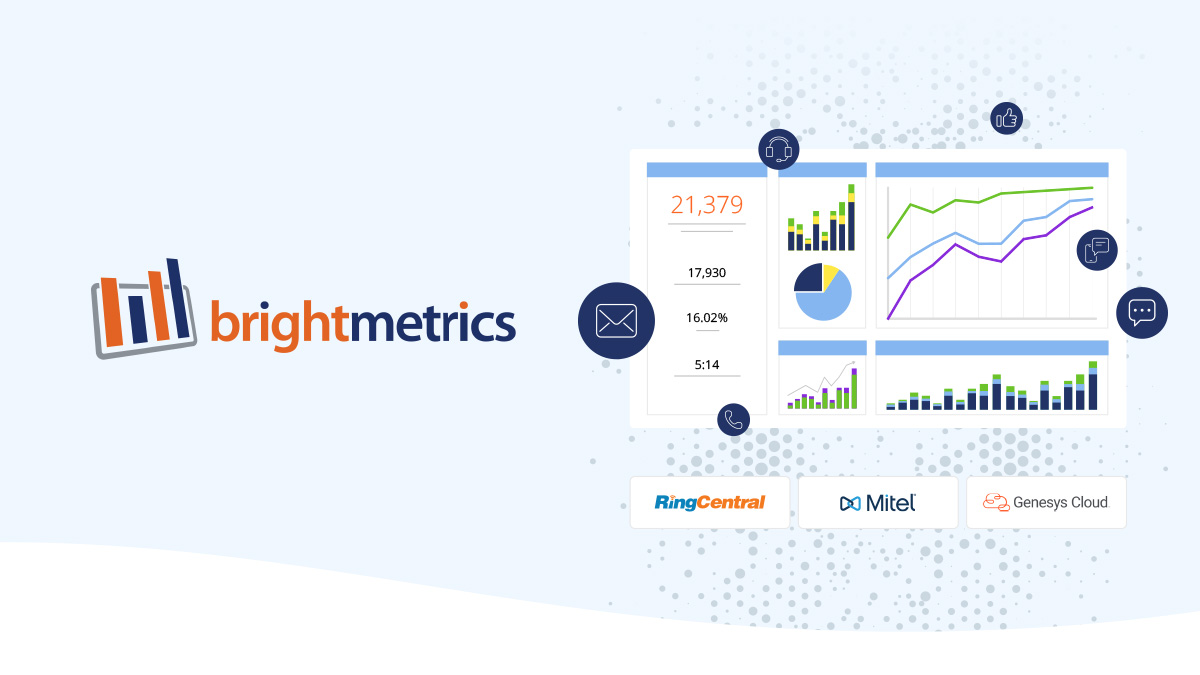Picture a financial services call center where every customer situation is handled with utmost confidence, resulting in unprecedented levels of caller satisfaction and a superior reputation as a trusted financial solution provider.
In this blog, we delve into the critical metrics that have the ability to empower your call center and achieve extraordinary outcomes. By meticulously assessing the urgency and context of each interaction, you will gain access to accurate data that will drive effective first call resolution (FCR) and pave the way for enduring customer relationships.
The Role of Reliable Metrics in Financial Services Call Centers
Call center or contact center metrics are essential data points used to measure an agent’s individual performance and the overall communication system’s functionality. There are various ways of analyzing and interpreting metrics, including through CSAT surveys and advanced analytics and reporting tools.
Analyzing call center metrics enables service teams to uncover invaluable caller data insights, such as identifying issues with understaffing, understanding caller preferences, and evaluating agent performance. By grouping industry-specific metrics catered to a specific sector – such as financial call centers – agents can proactively take relevant action to improve their KPIs and drive impactful results.
Financial service call centers are crucial in providing the proper information for effectively managing accounts and investments. Equipped with industry-specific features like voicemails and call queueing, specialized contact centers guide callers through self-service banking via interactive voice response (IVR) options.

4 Popular Call Center Metrics for Financial Services
Financial services rely on a variety of performance metrics that determine the effectiveness of inbound communications. By compiling and managing the right combination of call center metrics, your company can pinpoint new market opportunities and provide efficient service standards. Keeping track of the following data can help agents enhance overall service quality and caller satisfaction.
Average Handle Time
Average Handle Time (AHT) is a vital metric in financial service call centers, measuring the average duration of customer interactions from start to finish. AHT tracking begins when an interaction with an agent starts and concludes once the agent completes the conversation and necessary post-interaction tasks.
AHT provides a comprehensive view of customer service, considering various aspects of the customer journey and directly impacting your organization’s profitability.
A low AHT signifies effective resource utilization, allowing agents to handle more interactions and generate more revenue. It serves as a useful metric for assessing service level opportunities, team efficiency, and identifying training needs promptly.
However, it’s essential to note that a low AHT doesn’t guarantee quality service. Rushing through customer interactions can negatively affect customer satisfaction rates (CSAT). Striking a balance between a low AHT and maintaining a high CSAT average is crucial for delivering exceptional service.
Abandonment Rate
When a caller hangs up before connecting to a live agent and resolving their query, it’s deemed an abandoned call. Calculating abandonment rate involves dividing the number of calls where customers hang up before an agent answers by the total number of inbound calls offered.
Measuring the abandonment rate is a crucial metric in financial service call centers, as it can signify issues with staffing levels or operational inefficiencies. By consistently monitoring and analyzing these rates, call centers can proactively identify and resolve underlying problems, ensuring agents can efficiently provide prompt resolutions to customer queries and improve customer satisfaction.
Recent studies indicate that financial service call centers have an average abandoned call rate of 6.85%. This rate is lower compared to industries such as healthcare and government sectors. As a general guideline, customer service centers should strive to maintain an average abandoned call rate ranging from 4% to 8%.
Agent Occupancy
The agent occupancy rate reflects the level of activity, including time spent managing calls, idle periods, and other non-call activities like data entry in a CRM. Keeping track of external factors like seasonality and peak call periods helps contact centers analyze caller traffic and demands.
Calculating the occupancy rate involves dividing the total handling time by the total handling time plus the total available time and multiplying the result by 100. A high occupancy rate may indicate a high risk of burnout or an inefficient deployment of agents.
Efficiently handling calls is crucial to avoid negative impacts on other critical metrics. For instance, customers tend to provide a higher Net Promoter Score (NPS) for agents who resolve a banking fee dispute within 10 minutes.
To leave a lasting impression on your customers, aim to maintain optimal agent occupancy levels and consistently provide efficient, high-caliber customer service.
Service Level
The service level of your call center refers to the number of incoming calls answered by agents within a specified timeframe. It helps determine the ideal number of agents needed based on call volume. By assessing the service level, you can quickly evaluate agent performance before delving into other key performance indicators (KPIs). Important metrics affected by service level include abandoned calls, average handle times, and call agent utilization rates.
A service level agreement (SLA) of 80/20 means that agents should answer 80% of calls within 20 seconds. It’s crucial to ensure that your financial service call team can handle call volumes effectively, especially during peak periods, to minimize the number of abandoned calls.
Managing your contact center according to service level standards helps your company efficiently address all caller queries, resulting in increased customer lifetime value. By aligning financial service quality with call center productivity practices, you can deliver exceptional service that meets customer expectations.
Applying Metrics Toward Customer Satisfaction
Accurate call metrics provide financial customer service agents with valuable data to enhance customer satisfaction. These insights also help call center managers evaluate agent productivity, identify individual strengths, areas for improvement, and specialized skills. Real-time and historical call metrics serve as a reliable reference for training agents and optimizing staff deployment.
Brightmetrics™ offers UC and contact center systems an advanced analytics solution that provides in-depth interaction and performance metrics. With Brightmetrics, your team gains detailed visualizations of every caller engagement, enabling you to customize reports and make well-informed decisions that drive caller satisfaction. From comprehensive dashboards to detailed reports, Brightmetrics equips leaders in the financial services industry with the insights they need. Call team members of all levels can collaborate and leverage their collective resources and findings for optimal caller engagement.
Schedule a Brightmetrics demo and discover how you can elevate your call center experience to the next level.



